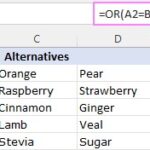Comparing checksums is crucial for verifying file integrity, ensuring that data hasn’t been corrupted during transfer or storage. This guide provides a comprehensive overview of how to compare checksums of two files in Linux using various techniques.
Understanding Checksums
A checksum is a unique hash value generated from a file’s content using a cryptographic algorithm. Even a tiny change in the file results in a drastically different checksum. This makes checksums ideal for detecting errors or malicious modifications. Commonly used checksum algorithms include SHA256, SHA512, and MD5 (less secure, use with caution). SHA256 and SHA512 are recommended for their robustness.
Generating Checksums
To generate a checksum, use the sha256sum (or sha512sum) command in Linux:
sha256sum path/to/file1This outputs the checksum hash followed by the filename. For example:
$ sha256sum myfile.txt
a1b2c3d4... myfile.txtComparing Checksums: Different Methods
There are several ways to compare checksums in Linux:
1. Visual Comparison
Generate the checksums for both files individually and visually compare the hash values:
sha256sum file1.txt
sha256sum file2.txtIf the hashes are identical, the files are the same. This method is simple but prone to errors, especially with long hashes.
2. Using sha256sum --check
This method verifies a file’s integrity against a pre-calculated checksum stored in a file (often named checksums.txt):
sha256sum --check checksums.txtThe checksums.txt file should contain the expected checksum and filename, one per line:
a1b2c3d4... file1.txtThe output indicates whether each file matches (“OK”) or not (“FAILED”).
3. Direct Comparison Using echo and gawk
This approach efficiently compares two files without creating a separate checksum file. It leverages echo to pipe the expected checksum and filename to sha256sum --check:
echo "$(sha256sum file1.txt | gawk '{print $1}') file2.txt" | sha256sum --checkgawk '{print $1}' extracts the checksum hash from the sha256sum output of file1.txt. This hash is then used to verify the integrity of file2.txt.
Alternatively, you can store the hash of the first file in a variable:
file1_hash=$(sha256sum file1.txt | gawk '{print $1}')
echo "$file1_hash file2.txt" | sha256sum --checkThis provides a cleaner and more readable way to perform the comparison. If the output is file2.txt: OK, the files are identical.
Conclusion
Comparing checksums is an essential practice for maintaining data integrity in Linux. Using sha256sum --check with a checksum file or the direct comparison method with echo and gawk offers efficient and reliable ways to verify that your files haven’t been altered. Always prioritize using strong checksum algorithms like SHA256 and SHA512 for enhanced security.
